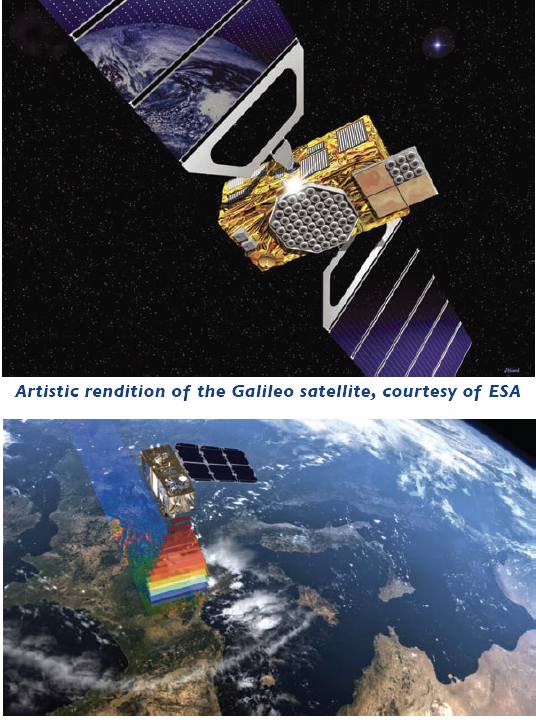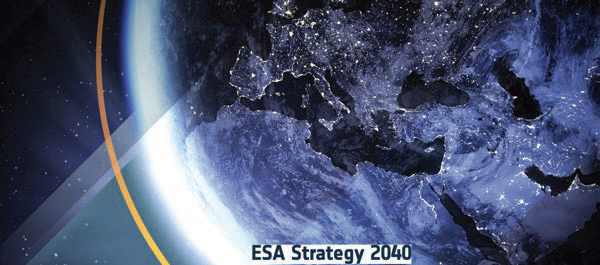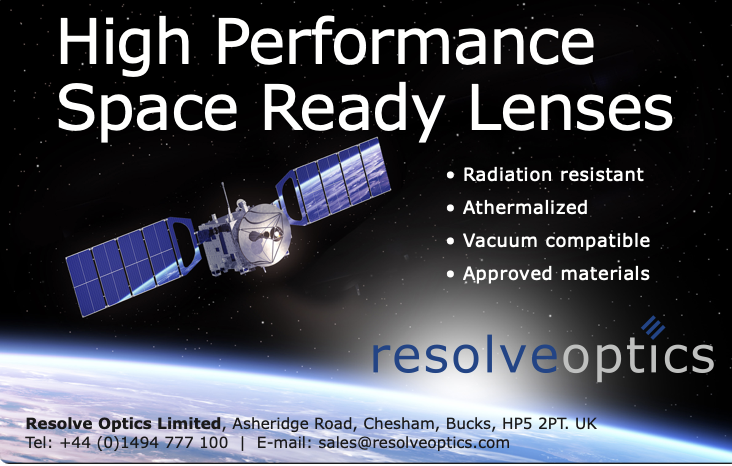Stewart is the Sales Director for Telespazio in Germany. He graduated with a degree in Systems Engineering in 1992 and trained and worked as a software engineer and ground systems architect until 2014. Stewart helped to develop ground segment systems for many well-known space programs, including: Rosetta comet chaser, Mars Express and Beagle 2, Galileo FOC, Meteosat Third Generation and OneWeb. From 2019 until 2024, he was Deputy Head of Strategy and Sales at Thales Alenia Space in the UK.

Mr. Hall, would you please introduce yourself to our readers?

Stewart Hall
Stewart Hall
I’m British and 55 years old. After graduating with a degree in Systems Engineering in 1992, I trained and worked as a software engineer and satellite ground systems architect until 2014. I assisted with the development of ground segment systems for many well-known European space programs that included Rosetta comet chaser, Mars Express and Beagle 2, Galileo IOV and FOC, Meteosat Third Generation and OneWeb. From 2019 until 2024 I was Deputy Head of Strategy and Sales at Thales Alenia Space in the UK. Since November of 2024, I am the Sales Director for Telespazio in Germany, dedicated to Satellite Operations and System. In summary, I started out a software nerd and evolved into a space nerd!
Please introduce Telespazio Germany...
Stewart Hall
Telespazio Germany is a leading European space company delivering mission operations, space systems development and SATCOM services. The firm’s major customers for operations and systems are satellite operators: government, trans-national and commercial. European Space Agency (ESA) / ESOC (European Space Operations Centre) is a key account. Approximately 250 staff are dedicated to space mission operations in disciplines such as flight dynamics, sub-system specialists, operations managers, trainers (including astronaut training), administration, IT and infrastructure engineering.
An additional 100 staff are dedicated to systems development for current and next generation mission-control, simulations, flight control, payload data processing, astrodynamics, AI, cybersecurity, cloud, and satellite communications services. There are additional staff delivering air traffic management operations, training solutions, and drone protection services. Telespazio Germany is a subsidiary of the Telespazio Group, a Leonardo and Thales joint venture. Telespazio Group operates 4 space center, 25 operating sites, and has a presence in 15 countries.
What is your perspective on European independence in Space?
Stewart Hall
Europe has always strived for and achieved independence in space. Since the organization’s inception, the ESA has successfully managed the collective of its member states, laid the foundations for a European space industry and has been building world-class missions with its industry partners ever since. Telespazio has been part of that European space story since the beginning, 60 years ago. There is sometimes a tendency to talk down our achievements, but I travel internationally and can tell you that Europe’s crowning achievements in space are envied. I would say from the turn of the century, Galileo and Copernicus marked a step change because it showed that Europe was looking beyond science, exploration and SATCOM. It was getting serious about sovereign services. These European Union (EU) managed missions are providing valuable scientific and citizen services as well as delivering services used by government and military users. With a rapidly evolving geo-political situation and the new ESA Strategy 2040, Europe seems poised to make further leaps to secure sovereignty, including in space. Europe has the challenge of many stakeholders and partners, so agreeing is never easy, but the results of collaboration can certainly be spectacular. For example, we long ago stopped worrying about the cost of Galileo and Copernicus because they are demonstrating incredible value. The innovation and complications of those programs meant they took some time to mature. The next leap is more urgent, but I think European Industry is far more mature now that it was back then.
What has significantly changed since around 2015 is the presence of many exciting new space companies in all parts of the supply chain from component manufacturers to full space-based service providers; the latter are my target customers. When I started working in Space there were only institutional buyers. Since 2015, the initiative has taken by a thriving host of commercial companies taking advantage of new investor interest, lower-cost technology and minimal bureaucracy. They are delivering new services in a handful of years compared to 1-2 decades that was the normal cadence before then. It’s these exciting new companies that Europe needs to step-up to full capacity to react quickly enough to the rapidly changing global landscape. The role of companies such as Telespazio Germany is to join their supply chain and deliver our experience to further short-cut their time and effort to get to orbit and service delivery.

What is Telespazio Germany doing to prepare?

Stewart Hall
It’s not just intended for use by ESA itself, but by all European space institutions and industry. The new ESA technology has now reached the maturity where it is ready to operationalize. We are leading the operationalization of the technology on the operations side. Meanwhile the primes are pushing on the manufacturing side. This technology is free-to-use for Europe and ideal for its larger, more ambitious satellites in all orbits. It’s a powerful building block from which we can build systems to operate Europe’s next space missions. Being mature and free-to-use, means that buyers can enjoy faster system development schedules and lower costs from suppliers. Because it is part of both the manufacturer and operator supply chain, it accelerates the transfer on knowledge and data between these teams. This further increases the speed at which European operators can deploy space-based services. Going back to our commercial service EASE-Rise, we always envisaged it as a purely commercial satellite operations service: affordable, no-worries, modern software, cloud-based service. It was always designed rapid and unlimited scaling for operating heterogeneous fleets of small satellites. Today it’s flying several commercial European SmallSats and Indian NanoSats. Our next thought is to adapt it to be better suited for Europe’s sovereign SmallSat missions. This is because there is blurring of what was once clear segmentation between institutional and commercial.

Many of the European new space companies I mentioned will be competing with the traditional primes deliver sovereign space services. That potentially includes programs like IRIS2, future navigation, CIS Lunar, national satellite constellations and various European in-orbit servicing and space control programs. While they are procured as commercial services, they have a government involvement which subtly changes the system requirements. We anticipated the growing need for sovereignty which is why we already prototyped a 100% European version that will meet these requirements. Moreover, customers are asking us for it right now, so we know the demand is there.
What does a good view of the European independence Space look like in 2040?
 Telespazio’s “Piero Fanti” Space Centre in Fucino (L’Aquila) has been active since 1963 and operates 170 antennas on 370,000 square metres of land. The Fucino space Centre carries out on-orbit satellite control, space mission management and telecommunications, television and multimedia services.
Telespazio’s “Piero Fanti” Space Centre in Fucino (L’Aquila) has been active since 1963 and operates 170 antennas on 370,000 square metres of land. The Fucino space Centre carries out on-orbit satellite control, space mission management and telecommunications, television and multimedia services.
Stewart Hall
Add-in low volumes and no assurance of repeat business and you understand all the barriers to closing business cases and investment. However, things are looking up. Just a few years ago, the possibility of viable European supply chains would not have been possible. But the European institutions and industry have been pivoting from some years, investing and developing products and services that can be price competitive at-scale. The key is “at scale.” We need Europe’s buyers to co-operate and scale-up Europe’s independent space capabilities with fleets of satellites, ground services and many more launches. The promise of repeat business creates the opportunity to close business cases and convince investors. When that happens, we can look forward to independence with sovereignty in cloud computing, AI, optical ground stations, advance payload technology, satellites and critically, launchers of all sizes being launched from European territory. It is extremely positive that ESA has released their “ESA Strategy 2040” with, among many others, the goal being European autonomy and resilience. This will provide a stable, long-term vision and strategy for the decades to come. Europe needs secure independent access to space by developing our next-generation technologies and systems.
If you want to know more about Telespazio Germany’s work and meet Stewart and the team, they will be at SmallSat Europe from the May 27th through the 28th at the RAI in Amsterdam.
www.telespazio.com/en/germany


